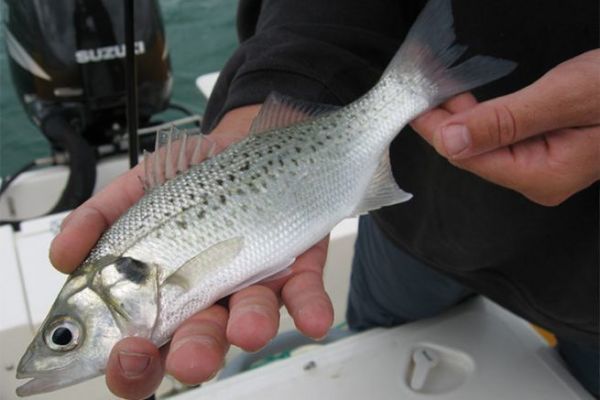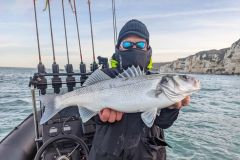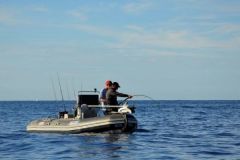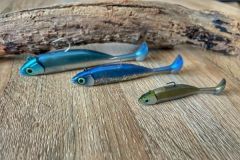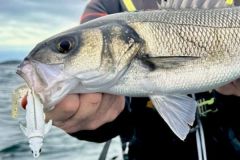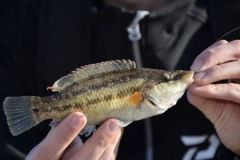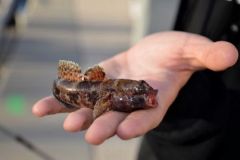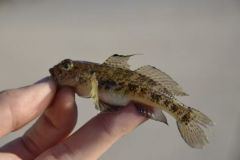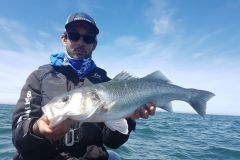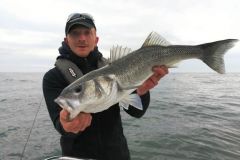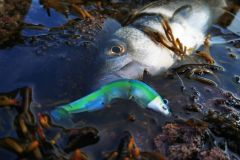Scientific name
Dicentrarchus punctatus (Bloch, 1792)
Morphology
The speckled bass has an elongated, slightly compressed body with 2 dorsal fins of equal length and height, separated: one spiny near the head and the other soft. It also has two pectoral fins, two ventral fins and one anal fin. The top of the speckled bass's head is straight and its mouth wide. The back of the speckled bass is light to dark bluish-gray with numerous black spots, and its sides and belly are light silvery.
Speckled bass fishing grounds
They can be found in rocky coastal areas and harbors, on sandy, muddy or rocky bottoms. They descend to depths of up to 20 meters, but frequently hunt down to 15 meters. Found in the Atlantic and Mediterranean.
Fishing techniques
Speckled bass tend to get caught easily on feather trains when hunting. Target the biggest of them with lures over 10 cm, small snappers or large soft crabs on the landing. They attack surface lures and swimming bib fish with ease. They also work well on casting jigs. From shore, they can be surfcast on worms.
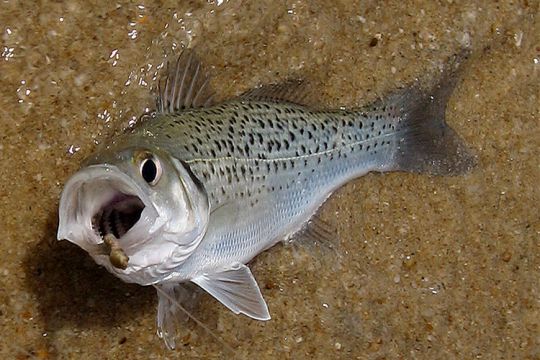
Reproduction
Speckled bass reach adult size at around 30 cm. They reproduce in winter.
Size and weight
- Catch size (legal minimum): none, I recommend 30 cm
- Size at sexual maturity: 30 cm
- Average size: 20 to 30 cm
- Maximum size: 60 cm (2.5 kg)
- National record: 2.35 kg (Royan, Poitou Charentes, 05/07/1997)
Good to know
Speckled bass hunts are marked by birds flying very low, pecking at their small prey just below the surface.
